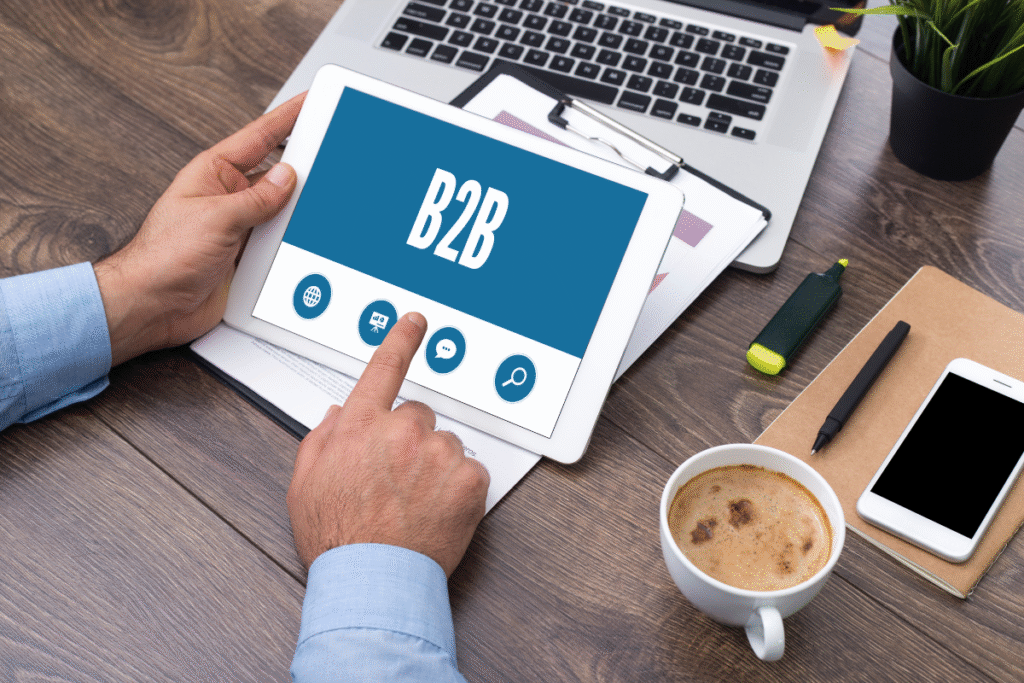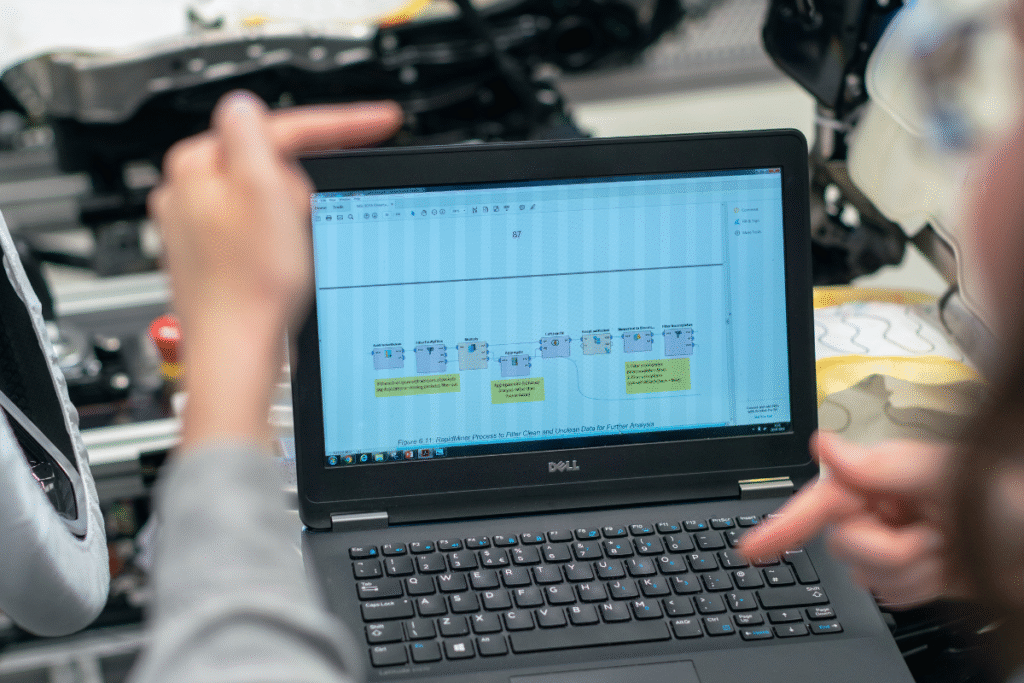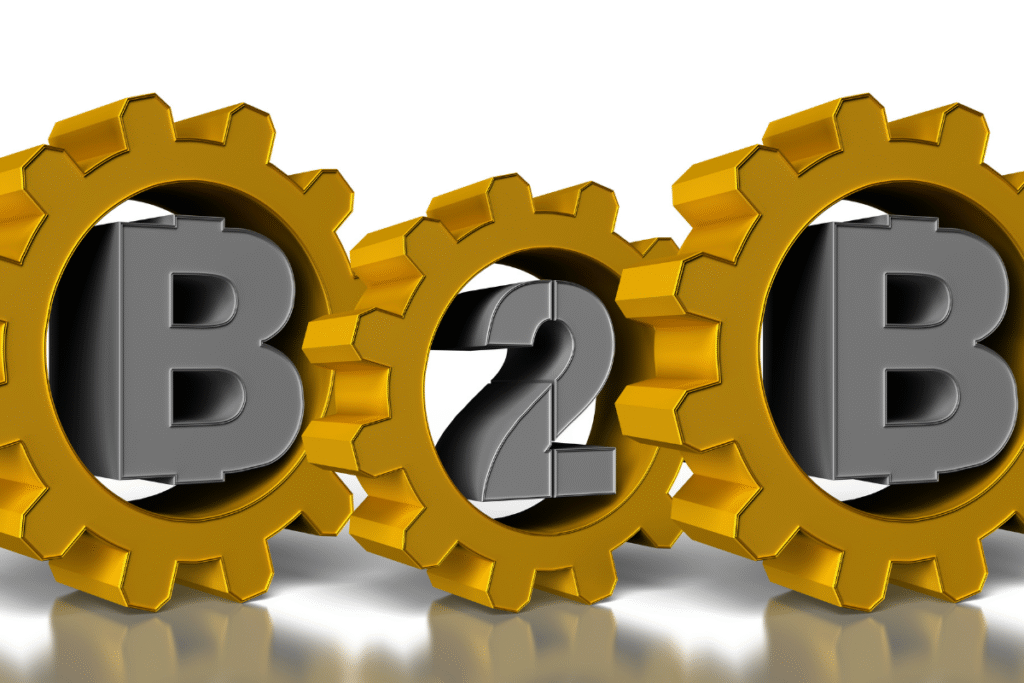Imagine running a business where your marketing brings in leads even while you sleep. That’s the idea behind building a B2B marketing engine. It’s not about working harder, but smarter. With tools like lead magnets, email automation, retargeting, and nurturing workflows, you can turn your website into a 24/7 lead generation machine.
This guide explains the steps, tools, and strategy needed to build a B2B marketing engine that keeps working in the background while you focus on growing your business.
Key Takeaways
- By passively selling the product, the system works nonstop in growing your business even in your sleep.
- Email automation and retargeting all keep prospects warm without manual follow-up.
- Smart tools give the rest of your marketing engine power. These include CRMs, landing pages, and content.
What Is a B2B Marketing Engine?
A B2B marketing engine is a set of tools and workflows that automatically attract, engage, and convert leads. It uses landing pages, lead magnets, emails, ads, and analytics to move prospects through a funnel. The goal is simple: generate sales-ready leads without needing constant input from you.

B2B marketing in a nutshell is marketing to those businesses that are engaged in selling to other businesses.
A similar marketing approach would be used if your business was set up for reselling flexible hosting services to other businesses, for instance.
In B2B marketing, each one of the many individuals that comprise the decision-making team must be brought on board first before a transaction can be made.
This, in turn, will complicate the B2B marketing process and might even result in a protracted sales process.
When more than one person is responsible for a decision, sales representatives may need to resort to very targeted sales messages focusing on each persona’s particular pain points in order to be effective.
For example, a CEO of a B2B company may be dealing with problems, which are entirely different from those faced by the IT Manager.
The B2B sales rep will have to understand all (both) of the problems and may need to solve each buyer’s problems to be able to conclude a deal.
The basic idea here is to understand your potential customer(s) and to employ B2B marketing as a tool to meet them halfway by offering solutions to their most pressing needs, thus enabling them to see that you are the answer to their problems.
Why Passive Lead Generation Matters in B2B
Manual outreach alone can’t scale. Passive lead generation helps:
- Reduce reliance on sales teams.
- Lower customer acquisition costs.
- Collect leads 24/7.
- Personalize nurture campaigns automatically.
Companies that automate lead generation see 10%+ growth in revenue within six months
How to Build a B2B Marketing Engine
Step 1: Have A Strong Lead Magnet
Lead magnets draw in potential clients by providing something free in exchange for contact details.
What Makes a Good Lead Magnet?
- A freebie that solves a small and very specific problem for your target audience:
- A checklist for free
- A very short ebook
- A downloadable template
- An industry report for the niche
Example: If you sell HR software, give away “Hiring Process Checklist for Small Teams.”
Lead magnets should be:
- Easy to access
- Quick to use
- Actionable
- Tools to Use
- Canva: for design
- ConvertKit or Systeme.io: for hosting downloads and forms
Tip: Use A/B testing to test different formats.
Step 2: Create a Simple Landing Page
Your landing page collects lead info and direct traffic toward your lead magnet.
Key Elements of Landing Page
- Clear headline
- Only one call-to-action (CTA)
- Short, benefit-driven copy
- Contact form
- Visual of what to expect from the lead magnet (mockup)
- In order not to divert attention, avoid the navigation bar or social icons.
- Tools Suggestion: Use Unbounce or Systeme.io for drag-and-drop creation of landing pages.
Example Structure:

- Headline: “Get the 10-Point Checklist That Simplifies Hiring for Small Businesses”
- Sub-headline: “Instant download, no credit card required.”
Step 3: Setting Up Email Automation
Keeping leads engaged post-capture is the function of email automation.
Key Emails in a Welcome Sequence
- Welcome Email: Deliver the lead magnet.
- Value Email: Give a useful tip or insight.
- Story Email: Demonstrate the client’s journey in successfully using your services.
- Offer Email: Present the lead the opportunity to book a demo/consultation.
Tools to Use:
- Mailchimp
- ActiveCampaign
- Systeme.io (free tier for beginners)
A SaaS startup saw a 38% increased open rate for its 4-email sequence compared to normal newsletters.
Step 4: Retarget Leads Automatically
Retargeting ads help keep your brand name in the limelight for the website visitors.
How Retargeting Works
Most leads don’t get converted into customers the first time they visit. Retargeting brings them back. Retargeting Options:
- Facebook pixel ads
- LinkedIn retargeting
- Google Display Network
Some Tips:
- Use testimonials in advertising
- Test 15-second video snippets.
- Stats: Retargeting ads have 10 times the click-through rate of normal display ads (Wordstream).
Step 5: Score and Segment Leads
Not all leads are the same. Use scoring to put focus on the best ones.
How to Score Leads
Assign points for actions such as:
- Opening an email – 5 points
- Clicking a link – 10 points
- Booking a demo – 20 points

The highest scores correspond to the sales-ready leads.
How to Segment Leads
Divide them into groups:
- By industry
- By company size
- By funnel stage
Tools:
- HubSpot CRM
- Zoho CRM
Step 6: Use Passive Acquisition Channels
Keep pulling new leads without spending much time on them.
- Good Passive Channels
- SEO blog content
- Evergreen YouTube videos
- Online directories
- Pre-recorded webinars
Example: The B2B tax advisor recorded a 20-minute webinar, added it to their landing page, and now it generates 50 leads per month without any advertising.
Bonus: Include a lead magnet CTA at the bottom of every blog or video.
Step 7: Track Everything and Optimize
Keep improving your funnel using data along the way.
- Important Metrics
- Lead capture rate
- Email open/click rate
- Cost per lead
- ROI per channel
Tools:
- Google Analytics 4
- Behavior heatmaps from Hotjar
- CRM dashboard (HubSpot, Zoho)
Pro Tip: Review funnels monthly. Kill what is not working. Scale what is.
Frequently Asked Questions
1. What is a B2B marketing funnel?
A B2B marketing funnel takes a lead from interest to purchase through stages such as awareness, nurture, and conversion.

2. Why is automation essential in B2B marketing?
It helps reduce time, keep costs low, and ensure that no leads slip through the cracks.
3. What is the best email tool for automation?
Startups generally tend to go for Mailchimp, ActiveCampaign, or Systeme.io because they are affordable and easy to use.
4. How do I build a lead magnet?
Pick a fast solution for your market, put it into PDF or checklist form, and give it away in exchange for an email address.
5. What is retargeting and how does it work?
Retargeting tracks via cookies and shows ads to those who visited your site but did not convert, attempting to lure them back.
6. What do I need to track to confirm my funnel is working?
Leads captured, conversion rates, email effectiveness, and revenue generated from campaigns.
7. Does this also apply well for service-based businesses?
Yes, passive lead engines help service companies, such as consultants and agencies, in the B2B context.
8. How long does it take to start seeing results?
It depends on the traffic and the setup. Most businesses begin seeing measurable results within 60 to 90 days.
Final Words
B2B marketing, like other conventional selling tactics, requires a thorough investigation, planning and coming up with a strategy that will bring in the right leads and convert them into loyal customers who will not only stay but also inform other people about your business.
Lead generation is a major part of B2B marketing because it enables you to locate and attract potential consumers who are most likely to become long-term customers.